This site uses affiliate links, meaning that if you make a purchase through our links, we may earn an affiliate commission.
Gorilla Trekking in Uganda is one of the most incredible experiences you will ever have and photographing gorillas in Uganda is an absolutely captivating and rewarding art form. However, photographing them in their natural habitat requires patience, practice, and skill. It can be challenging to capture the perfect photo of a wild animal since their behavior is unpredictable.
Here is a step-by-step guide on how to photograph gorillas in Uganda. Follow these 9 helpful tips to get great shots!
How to Photograph Gorillas in Uganda
If you are planning a trip to Uganda and researching gorilla trekking in Uganda, then make sure to read my post: 13 Practical Tips for Gorilla Trekking in Uganda (How to Plan, Prepare, and Stay Safe) and find out when is the best time to go, what are the best places for gorilla trekking in the world and Uganda, how many days you need to plan your trip, what are the requirements for travel to Uganda and for gorilla trekking, what to bring, pack and wear for gorilla trekking.
- 1. 9 Tips for How to Photograph Gorillas in Uganda
-
- 1.1. Get Down Low to Capture More Intimate Shots of Gorillas
- 1.2. Use Wide Aperture Setting on Your Camera to Add More Impact to Your Photos
- 1.3. Focus on Their Eyes and Create Gorgeous Catchlights
- 1.4. Focus on the Simple Background to Eliminate All the Distractions
- 1.5. Use a Long Telephoto Lens to Focus on the Details
- 1.6. Don't Forget to Use Your Wide-Angle Lens to Let Your Viewers See the Entire Scene
- 1.7. Be Patient, Observant, And Quick When Photographing the Gorillas
- 1.8. Experiment with the Shutter Speed
- 1.9. Pack These Things for Photographing Gorillas in Uganda
- 2. Intrepid Scout's Tips for How to Photograph Gorillas in Uganda
9 Tips for How to Photograph Gorillas in Uganda
Get Down Low to Capture More Intimate Shots of Gorillas
Get down as low to the ground as you can.
If possible sit down, or get down on your knees while photographing the gorillas.
To be honest, some of the best wildlife pictures you can get are the ones taken with you laying flat on the ground. But, to be realistic, there will be probably not enough room for laying down on your stomach once you reach your gorilla family. You will be in a tightly controlled group with everyone close to each other. You might have at least 8 or more visitors (often the treks are overbooked), plus porters, an expert tracker ranger, and two armed rangers to protect the group.
I was truly lucky when I went gorilla trekking in Uganda and only my daughter and I, plus two other people were in the group. We had plenty of space to spread out and move around.
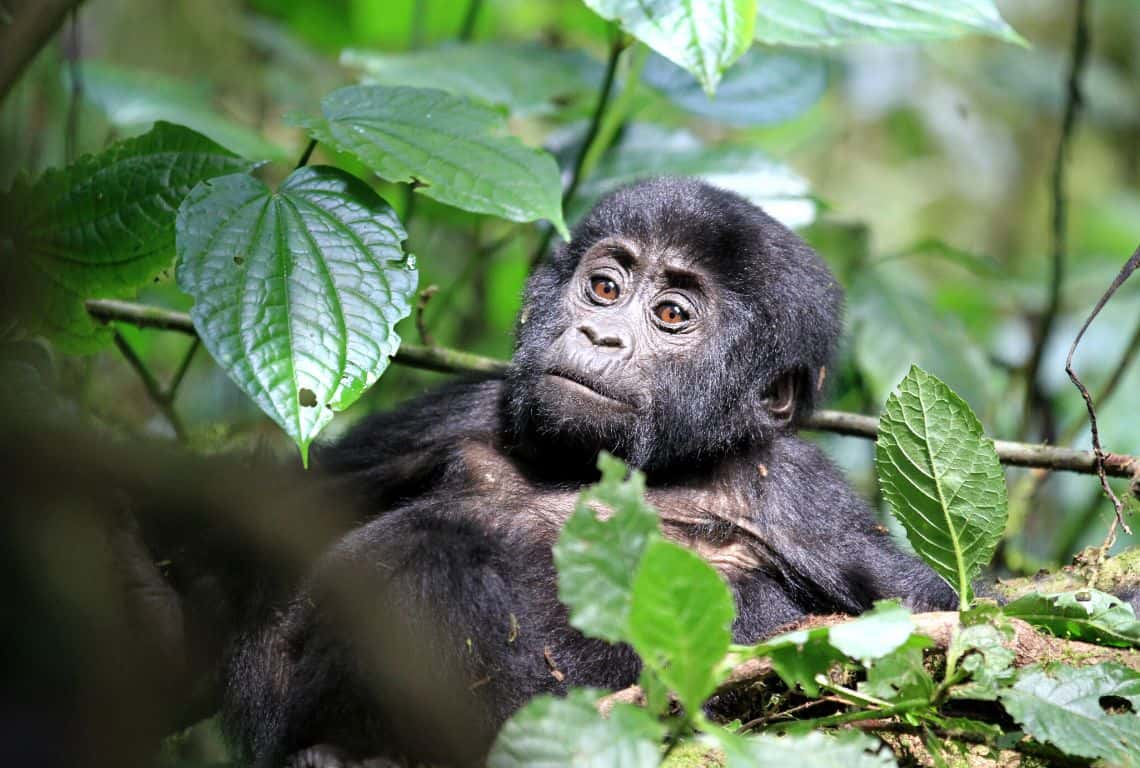
Get Down Low to Capture More Intimate Shots of Gorillas / How to Photograph Gorillas in Uganda
So to sum up, it is important that you position yourself at the eye level (or lower) of the gorilla or gorillas you are photographing. This is the best way to capture their true expression and their habitat.
Any photographs taken from above will lack a true connection between the viewer and the gorilla. The lower perspective will give your photos an impact and improve them tremendously!
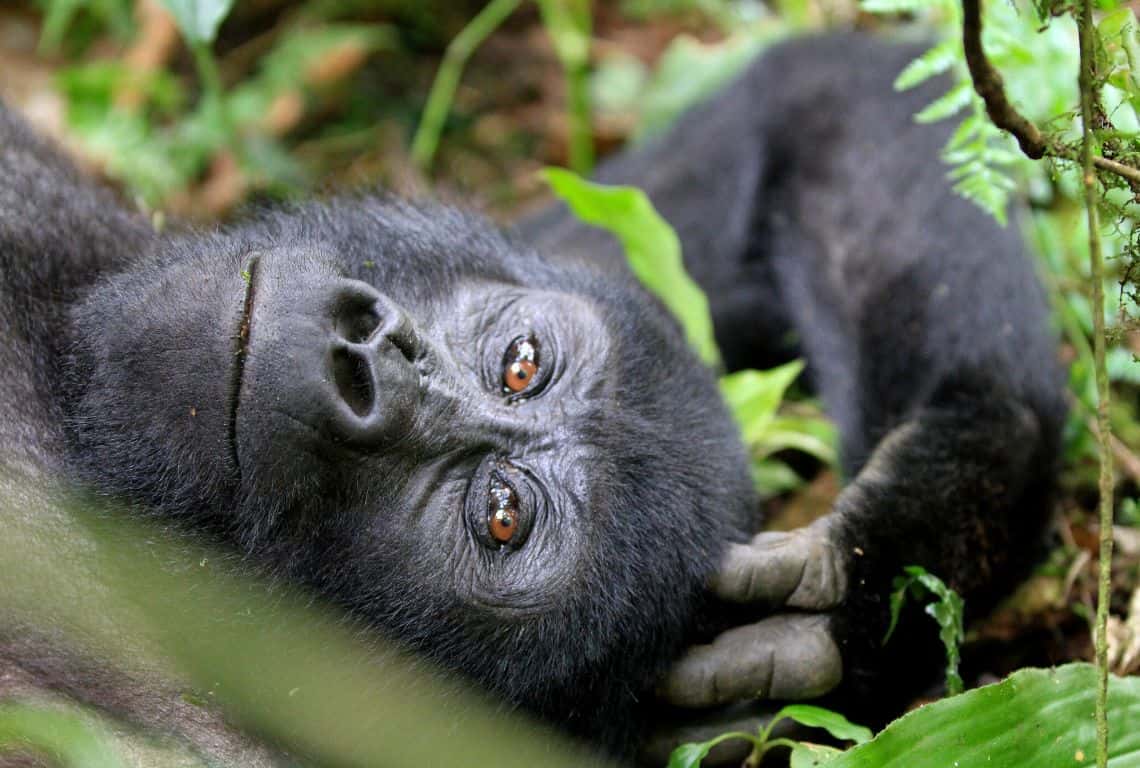
Get Down Low to Capture More Intimate Shots of Gorillas / How to Photograph Gorillas in Uganda
Use Wide Aperture Setting on Your Camera to Add More Impact to Your Photos
To add even more impact to your photos, use a wide aperture on your camera, for example, f/2.8. This will turn background and foreground elements like leaves and vines into soft smudges of color and make your gorilla portrait stand out.
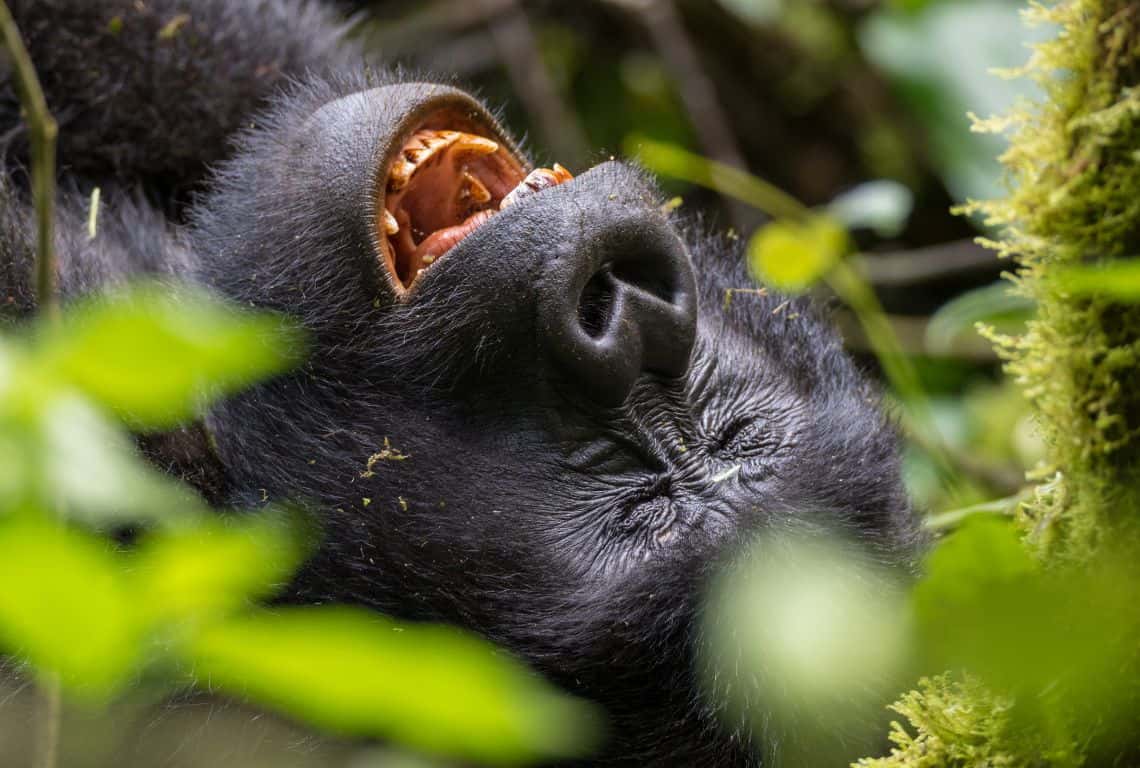
Use Wide Aperture Setting on Your Camera to Add More Impact to Your Photos / How to Photograph Gorillas in Uganda
What is a wide aperture in photography and how to use it? Keep reading. Here is a simple step-by-step explanation:
- The meaning of aperture in optics is a hole through which light travels. In photography, this term relates to the opening of a lens. The larger the opening, the more light will get in.
- Aperture in photography is measured through using what is commonly known as an ‘f-stop’.
- Wide aperture refers to apertures that open as wide as f/1.2 – f/2.8.
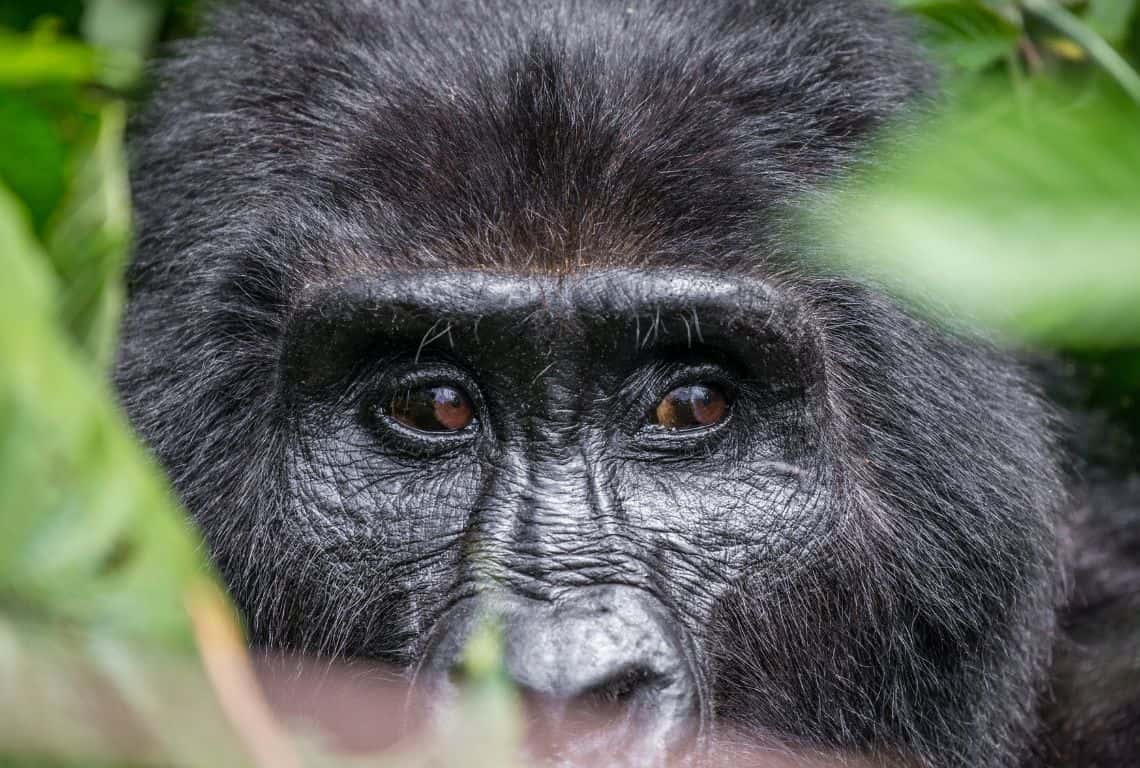
Use Wide Aperture Setting on Your Camera to Add More Impact to Your Photos / How to Photograph Gorillas in Uganda
Focus on Their Eyes and Create Gorgeous Catchlights
Focus on their eyes. Eyes are the entry points of your photos. This is the first thing that your viewer will look at. Make sure the eyes are sharp.
If the eyes are out of focus, your photo will not have the desired impact on the viewer.
Look at the gorillas and see if there is any sunlight on their faces. The best would be if you could find one with its head at about a 45-degree angle from the sunlight. This will create gorgeous catchlights and cast natural-looking shadows on the rest of their face.
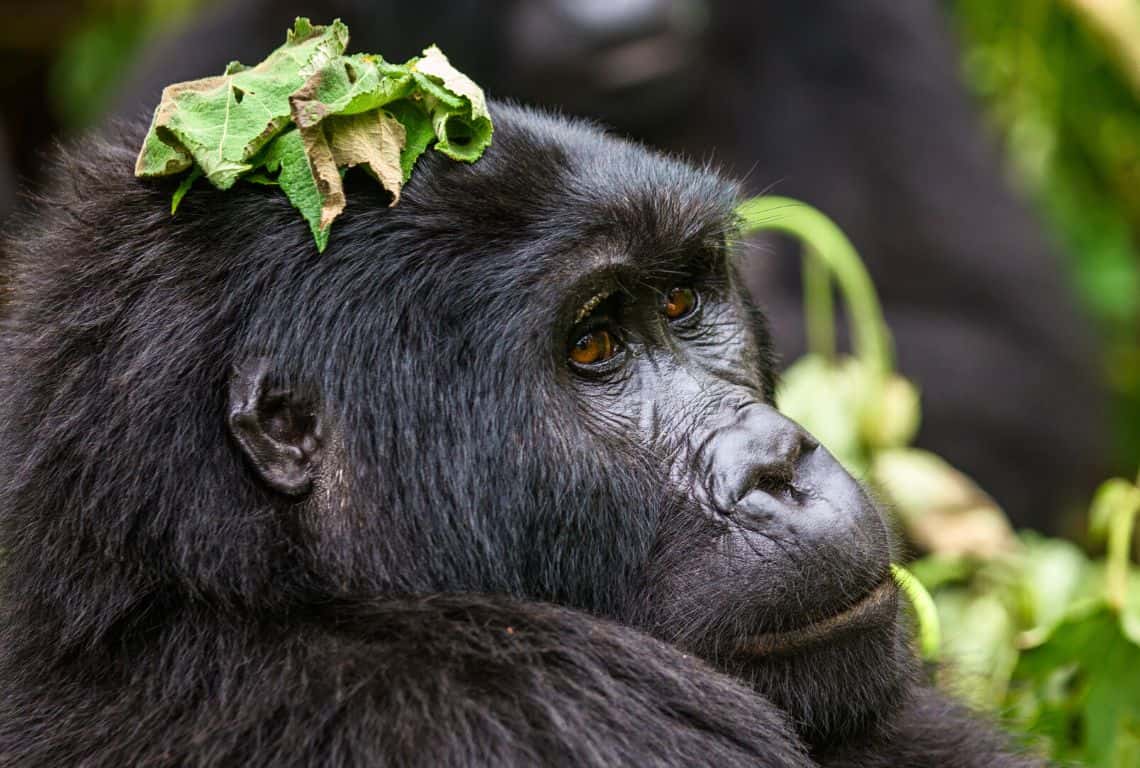
Focus on Their Eyes and Create Gorgeous Catchlights / How to Photograph Gorillas in Uganda
Focus on the Simple Background to Eliminate All the Distractions
The background of your photos is extremely important.
While photographing the gorillas, make sure the background is not too busy and not too bright. The background should not distract from the main object of your photo, but rather, it should complement and enhance the main object.
Now, you might be dealing with lots of shadows and dark backgrounds while photographing the gorillas. The key is to look for a gorilla with at least a bit of sunlight on it while the background behind lies in a shadow.
However, the background should tell a story as well. It should give your viewers an idea of gorillas’ natural habitat.
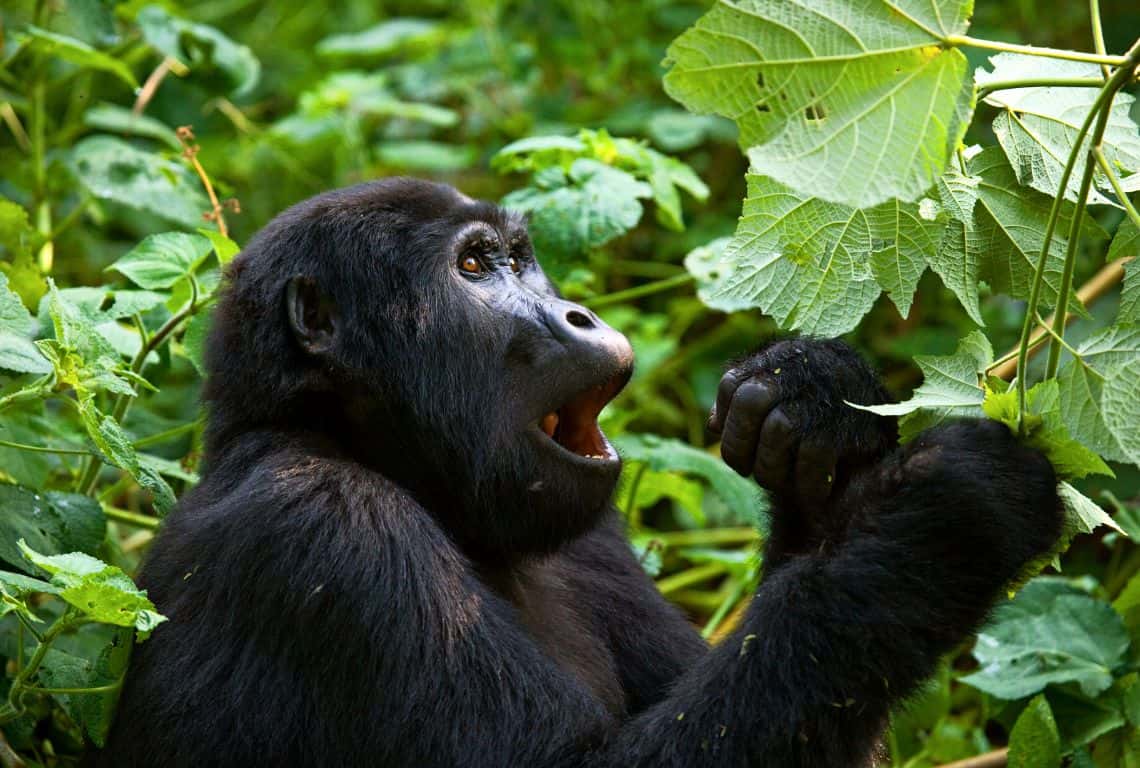
Focus on the Simple Background to Eliminate All the Distractions / How to Photograph Gorillas in Uganda
Use a Long Telephoto Lens to Focus on the Details
The long telephoto lens is invaluable! It will allow you to focus on the details while cutting out all the other distracting elements.
The long telephoto lenses have a shallow depth of field, which means they can focus in on small objects (even faraway ones) at specific distances.
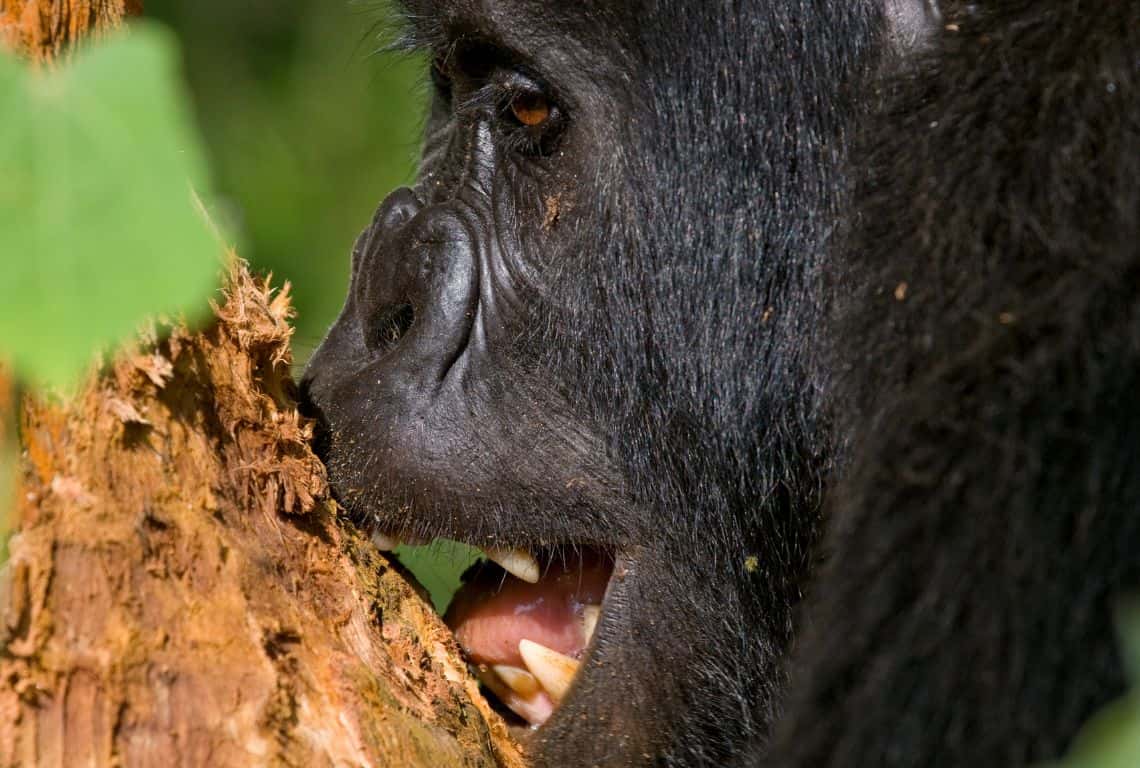
Use a Long Telephoto Lens to Focus on the Details / How to Photograph Gorillas in Uganda
What is a shallow depth of field vs a deep depth of field in photography? Here is a simple explanation:
- A shallow depth of field refers to an effect where very little of the image is in focus. For instance, an image might include an in-focus subject but have a blurred-out background. This is common in portrait photography.
- A deep depth of field refers to an effect where the entire shot, from foreground to background, remains in focus. Deep depth of field effect is common in landscape photography, where detail is a key compositional element.
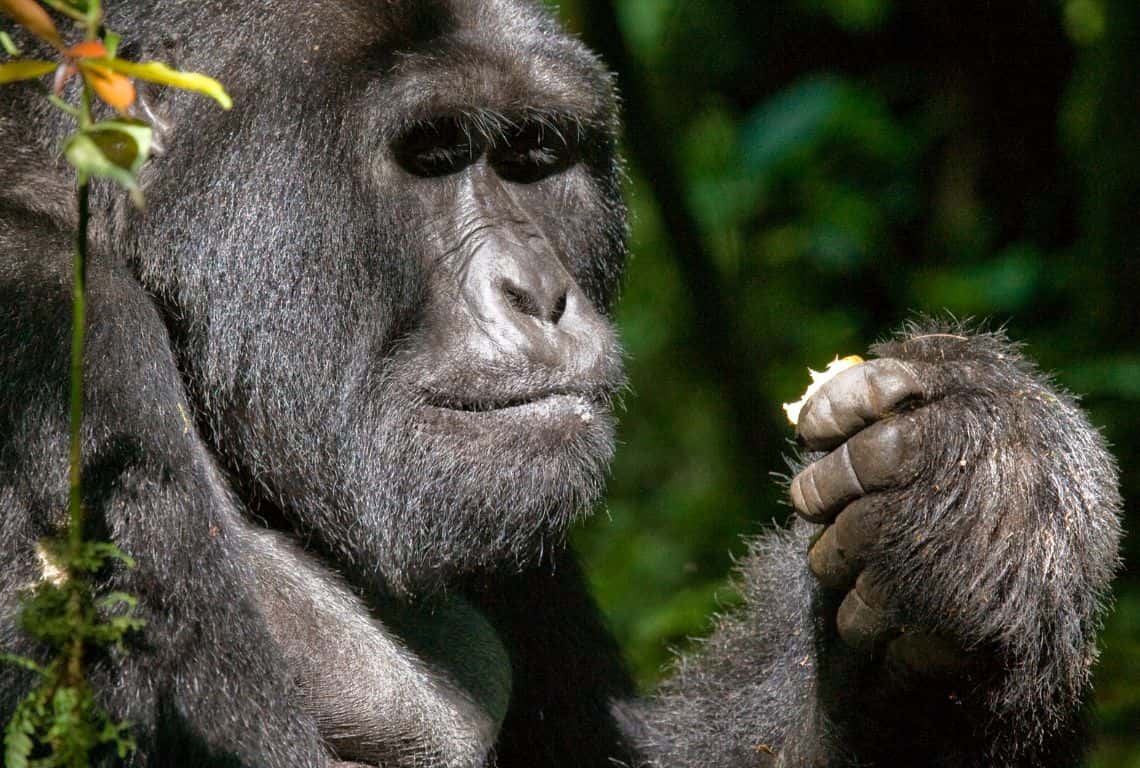
Use a Long Telephoto Lens to Focus on the Details / How to Photograph Gorillas in Uganda
Don't Forget to Use Your Wide-Angle Lens to Let Your Viewers See the Entire Scene
While observing and photographing the gorillas, you will need to maintain a distance of at least 10 meters (32 feet). Some of the gorillas will be far away hiding in the dense vegetation and you will definitely have to use your long telephoto lens.
However, keep in mind, that they are unpredictable and curious and they might approach and reach out to you. It is a perfect opportunity to use your wide-angle lens.
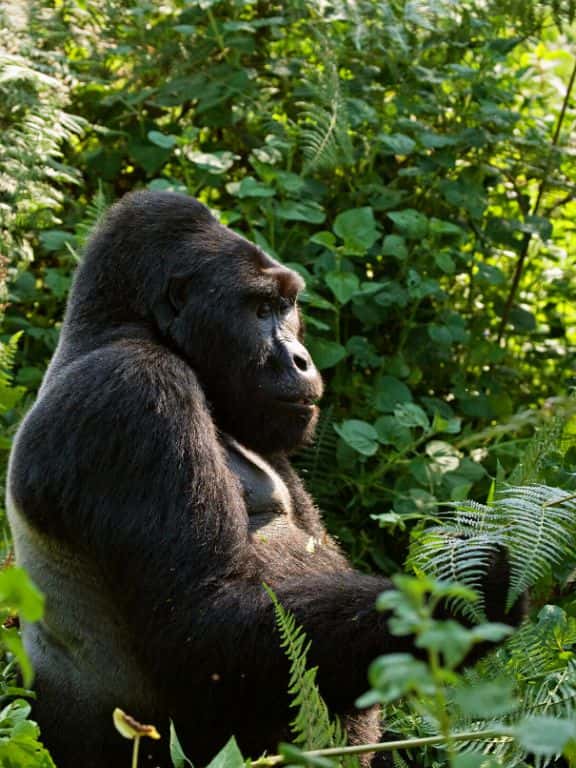
Tips on How to Photograph Gorillas in Uganda
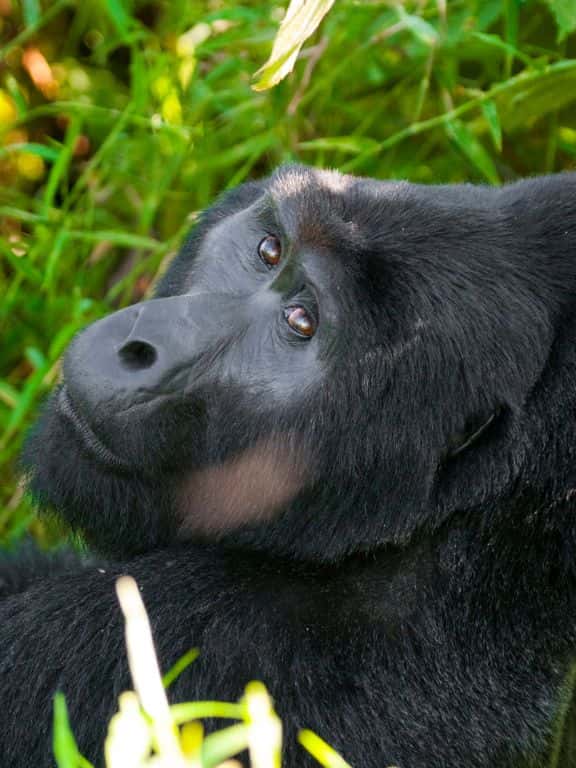
Tips on How to Photograph Gorillas in Uganda
A wide-angle lens is any lens with a short focal length and a wide field of view. This type of lens will allow you to include more crucial elements of the background. It will allow your viewers the feeling of viewing the scene with their own eyes rather than through a photograph.
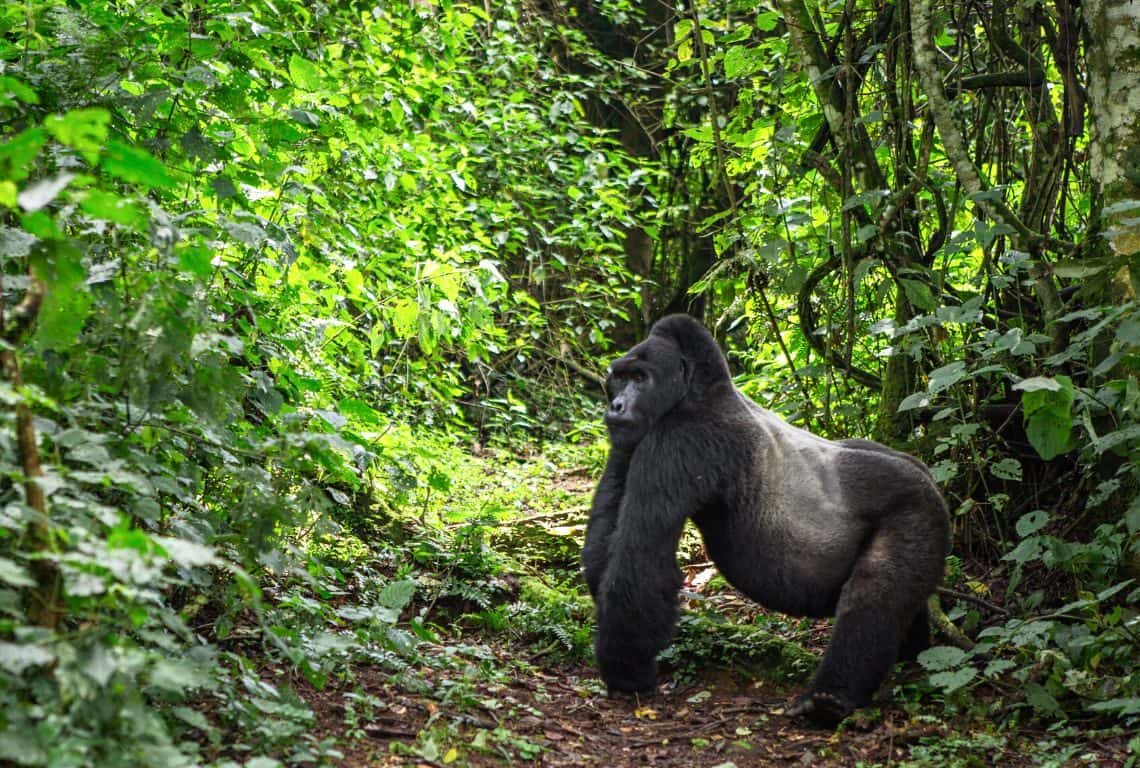
Don’t Forget to Use Your Wide-Angle Lens to Let Your Viewers See the Entire Scene / Tips on How to Photograph Gorillas in Uganda
Be Patient, Observant, And Quick When Photographing the Gorillas
I know, it is easier said than done! But, be patient, observant, and quick when photographing the gorillas!
You might be trekking for a long time before you reach your gorilla family. The anticipation of seeing the gorillas will be simply overpowering.
Once you reach your gorilla family you will only have one hour to spend with them. You will be compelled to start shooting photos the very first moment you see them without any thought. And, it is quite ok.
Next, take your time and observe the gorilla family. Focus on each individual and find the ones that are the most engaging and the ones that are situated in the best light.
Lastly, be patient and prepared. They are wild and unpredictable. They have disagreements and constantly engage in different behaviors.
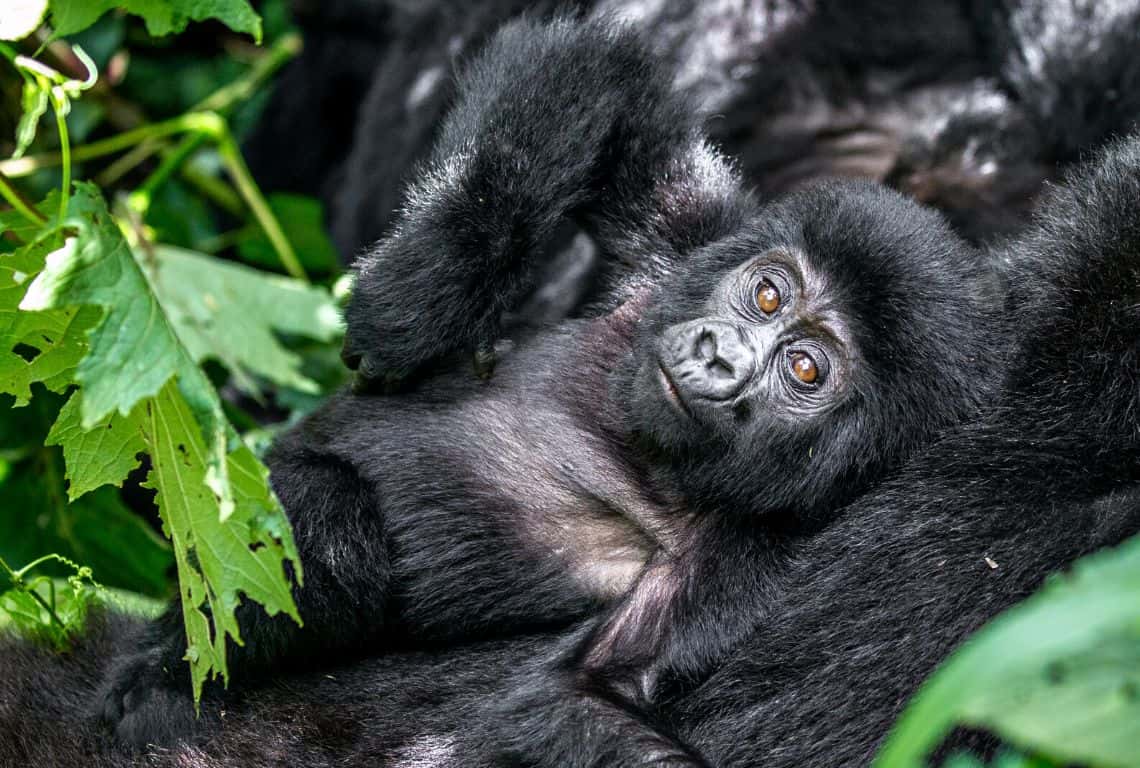
Be Patient, Observant, And Quick When Photographing the Gorillas / Tips on How to Photograph Gorillas in Uganda
Experiment with the Shutter Speed
What shutter speed should you use? There is no right or wrong answer to this question. It all depends on how fast the gorillas are moving around you.
Now, you have two options here… You can choose to either freeze your subject or reveal its motion.
However, before we dive into it, the question is:
What is shutter speed?
- Shutter speed refers to how long the camera’s shutter remains open when taking a photo, and it controls the amount of time that we capture light.
- A shutter speed of 1/250 sec should be fast enough to freeze gorillas walking around.
- A shutter speed of 1/500 sec is better if your subject is moving a bit quicker.
- If your subject is moving exceptionally fast shutter speeds of 1/2000 sec, 1/4000 sec, or quicker are preferred.
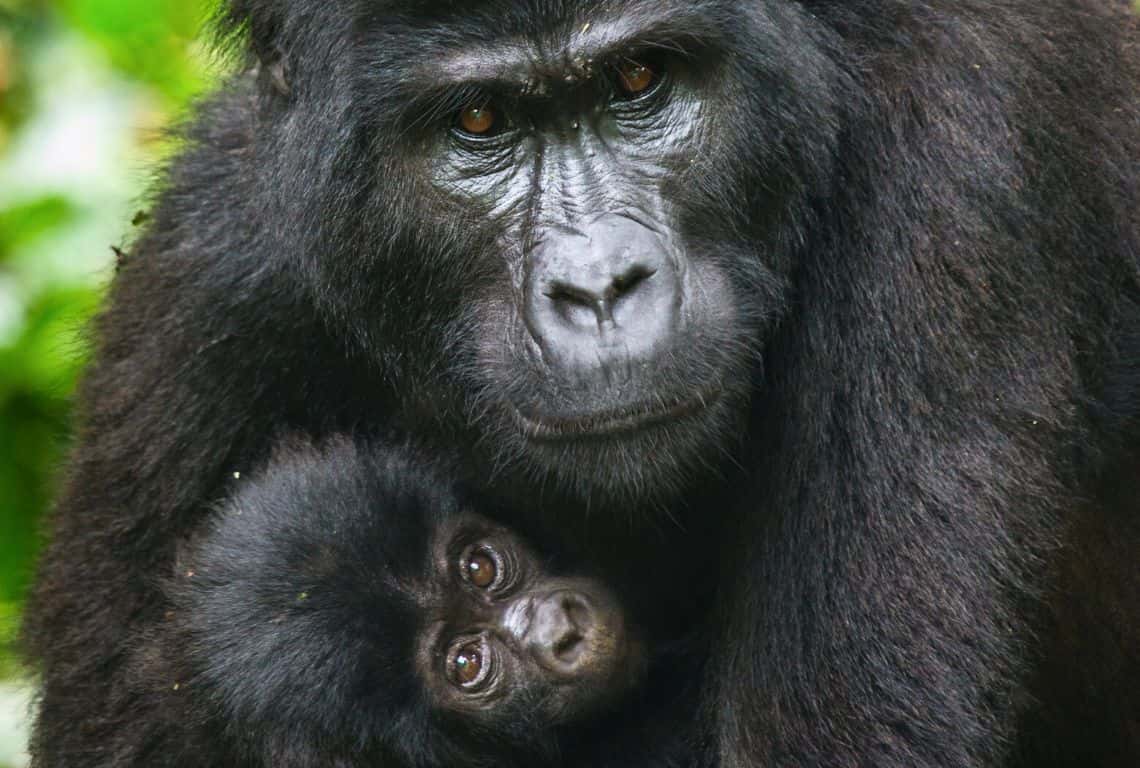
Experiment with the Shutter Speed / Tips on How to Photograph Gorillas in Uganda
So here is the run down… The gorilla trek usually starts early in the morning and most of the trekkers will reach their gorilla family within a few hours after starting the trek. At that point, the gorillas are still lounging around and socializing.
If your trek is substantially longer, then your gorilla family might be already on the move and foraging for food. In this instance, photographing the gorillas might be very challenging and you will see all of them in constant motion.
Pack These Things for Photographing Gorillas in Uganda
It is important that you are prepared for gorilla trekking. Here is the most condensed and comprehensive list of things you need to bring for gorilla trekking:
1. Camera!!!
Gorilla trekking is a photographer’s dream! If you are like me, you will be taking hundreds, if not thousands, of photos. It is an incredible experience!
I have a Nikon COOLPIX P1000 Super Telephoto Camera that I bought a couple of years ago and I really like it. So, check it out and see if you might like it.
2. Spare battery for the camera
Make sure to have a spare battery for your camera. I think there is nothing more frustrating than knowing that you still have half a hike ahead of you, yet your camera’s battery is gone.
3. Tripod
I like to use a tripod since it gives me more stability when taking close-ups of wildlife. I have Manfrotto Befree Live Carbon Fiber Tripod with Fluid Head. It is only 3.0 pounds and it fits nicely in my backpack.
4. Binoculars!
If your camera does not have a good zoom, then binoculars are a must. What a treat to see these amazing animals up close.
5. Bottled Water
Pack water! It will be hot and humid and you will sweat a lot! Your lodge will probably provide you with bottled water. Take as many bottles (at least 4 bottles) as you can!
6. Sunscreen
Protect your skin from the sun and apply sunscreen. The sun is very strong at these high altitudes around midday. My favorite is EltaMD UV Sport Broad Spectrum SPF 50 Sunscreen Sport Lotion.
6. First aid kit
Prepackaged first-aid kits for hikers is a must!
6. Insect Repellent
Insect repellent is an important step against mosquitoes and ticks that can spread diseases like West Nile and Lyme. When selecting an effective insect repellent, do not look at the brand names, but rather, look at the concentration of the active ingredients. Concentrations of DEET at 25 to 30% are the best to keep you protected.
7. Gardening Gloves
You are going to need sturdy, thick, and cut-resistant gardening gloves! As you are trekking in thick vegetation, you will need to grab and hold on to branches and vines to help yourself up or down the mountainside. Check out these Handson Gardening Gloves from Amazon.
8. Energy Snacks
The lodge where I was staying packaged the entire lunch for me. And, although, it all looked good, it was way too much food for me and it was not packaged efficiently. My recommendation is to bring and pack some high-energy bars. I like RXBAR. It is a high-protein bar, gluten-free, and it is super yummy! Make sure to get a variety pack to keep it interesting.
9. Day Pack
Obviously, all this stuff mentioned above needs to be packed into a sturdy day pack. My favorite day pack that I had for years is Osprey Daylite Plus Pack Special Edition. It is perfect for hiking or traveling.
Intrepid Scout's Tips for How to Photograph Gorillas in Uganda
- Don’t Forget to Put Your Camera Down for a Second
Just want to remind you to put down your camera for a second and soak in the view. Just take a second and watch your gorilla family. Enjoy this very brief moment in time and cherish this special encounter.
It is so easy to be just focused on every opportunity of taking pictures. Your mind will be racing at a mile a minute and you will be focusing on portraits, details, movements, etc. And this amazing wildlife experience shouldn’t just be about photography!
- My Most Important Tip for Photographing Gorillas in Uganda
Put down your camera every so often. Observe with your own eyes. You will feel inspired by these wonderful animals and welcomed into their family for just a brief moment.
More Helpful Posts About Uganda:
Now, It Is Your Turn, I Would Like to Hear Back from You!
Are you planning your trip to Uganga?
Please let me know! Drop me a quick comment right below!
Did You Find This Post Useful?
Why Not Save Tips for Gorilla Trekking in Uganda to Your Pinterest Board!
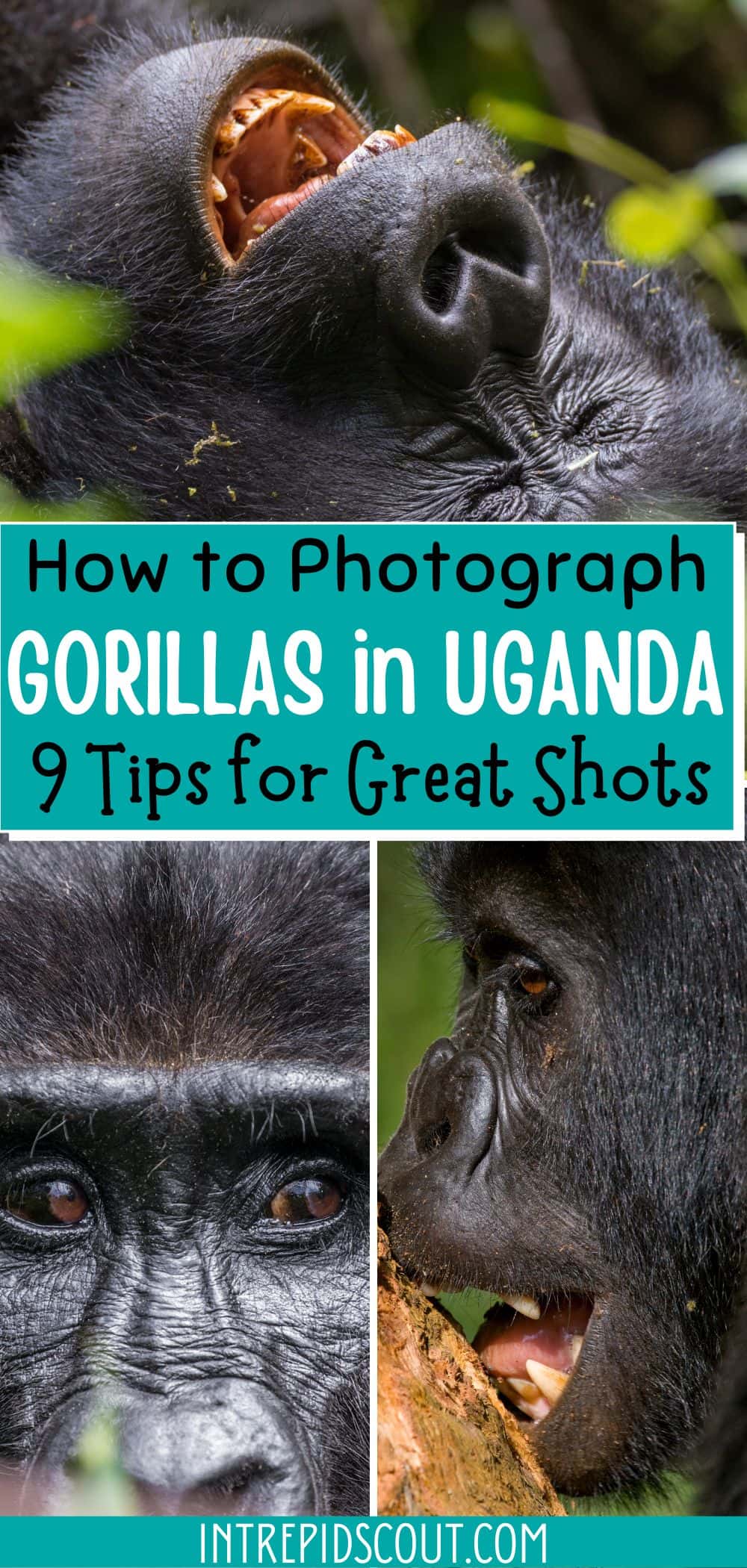
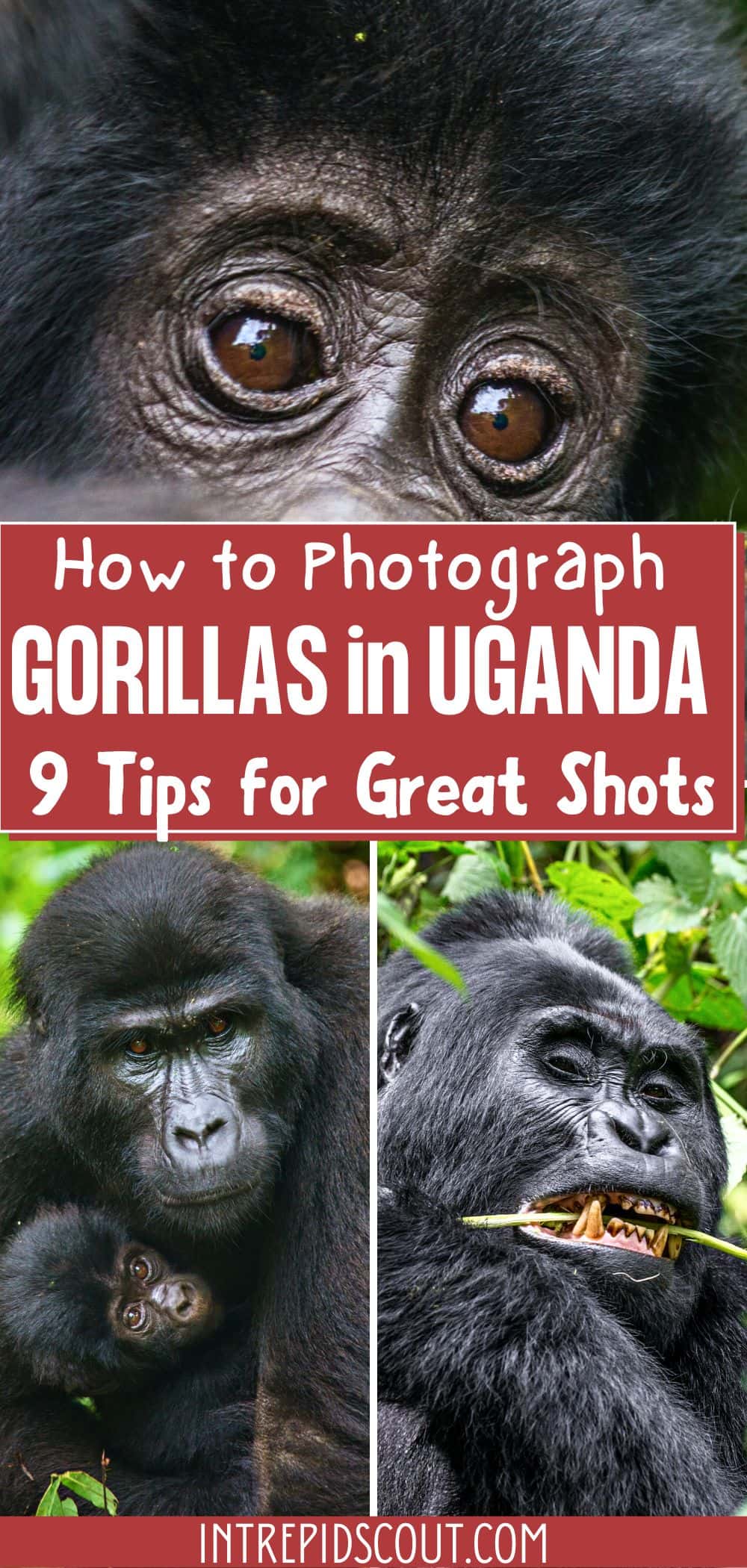
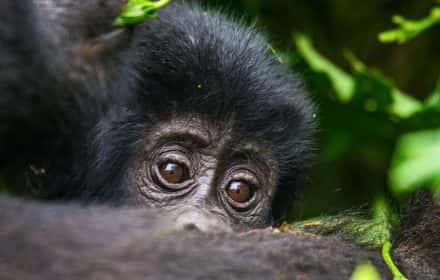
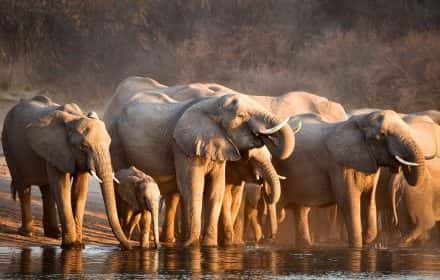
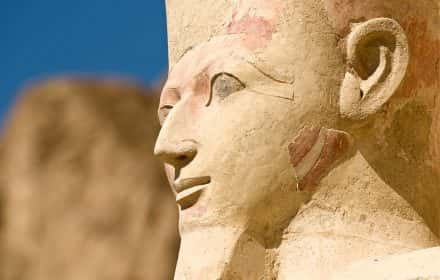
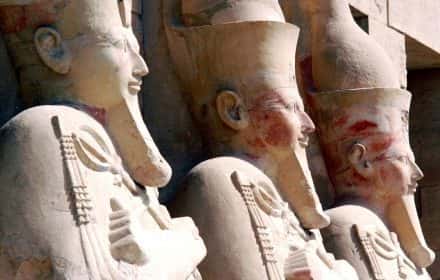
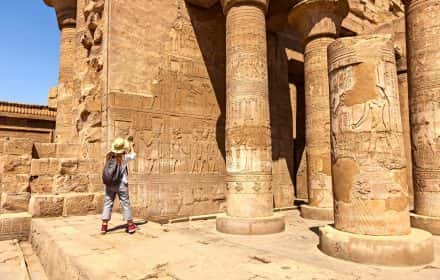
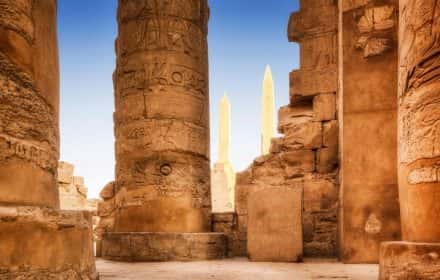
Comments:
5 thoughts on “How to PHOTOGRAPH GORILLAS in UGANDA (9 Helpful Tips for Great Shots)”
Great article thanks! I will be in Uganda in September and shoot a Nikon d5600, which AF area mode would you recommend?? Also which metering mode would work best?? Evaluative, Center Weighted or Spot??
When using the single point auto-focus mode, you get to work with a single auto-focus point. This is a precise and a quick way to lock focus as the camera does not have to look around much. When you are shooting a portrait in aperture priority against a bright background then partial or spot metering is likely to be your best choice. I have a photographer’s eye and I use your heart.Good luck!
Excellent! I thoroughly enjoyed reading all the information and details you provided. I’m planning on going trekking in Feb 2026 by myself if I can’t find a friend to come with me.
Excellent! I thoroughly enjoyed reading all the information and details you provided. I’m planning on trekking in Feb 2026.
Wonderful! Good luck with everything! It is an incredible experience.